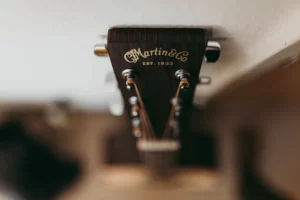Introduction
When you’re first starting out in the guitar world, there are a few things you need to keep in mind. This includes looking for a guitar that is right for you and also finding one that is perfect for your playing style. In addition, it’s important to research the cost and quality of the guitar before you buy it. When you’re just starting out, it’s important to have a support system around you. That’s why we’ve got this how-to guide on how to choose a guitar for beginners.
We’ll help you through the same process for all types of guitars, whether you are looking for an acoustic or electric guitar. We’re going to take a look at the most important factors to consider when choosing a guitar. We’ll go through the different types of guitars and what they are used for, and we’ll also help you understand how to choose the right guitar for you.
In this article, we are going to explain step-by-step guide on how to choose a guitar for beginners.
What Kind of Guitar Should You Buy?
There are two main types of guitars, acoustic and electric. Each type has its own set of pros and cons, so it is important that you must choose one that is right for your needs. The first step in choosing a guitar is deciding which type you want to buy. Here are some things to keep in mind:
Acoustic Guitars:
Acoustic guitars have been around for centuries, and they have changed very little over time (although there are some modern variations). They come in many different shapes and sizes, but they all have one thing in common – they only produce sound when you strum them or pluck them with your fingers.
Acoustic guitars are great for beginners because they are easy to play and don’t require any special equipment (such as an amplifier). They also have a very warm, natural sound that is great for recording and live performances.
Electric Guitars:
Electric guitars are the most popular type of guitar in the world, and they come in many different shapes and sizes. They all have one thing in common – they produce sound when you strum them or pluck them with your fingers. The difference between electric and acoustic guitars is that electric guitars need to be plugged into an amplifier or PA system to be heard properly.
Electric guitars are great for beginners because they are easy to play and don’t require any special equipment (such as an amplifier). They also have a very bright, crisp sound that is great for recording and live performances. Some people will argue that electric guitars are better than acoustic ones, but this really comes down to personal preference – there are great acoustic and electric guitars out there.
Acoustic-Electric Guitars:
Acoustic-electric guitars are a combination of acoustic and electric guitars. They have a hollow body that is used to amplify the sound of the strings, but they also have a built-in pickup that can be plugged into an amplifier or PA system.
Acoustic-electric guitars are great for beginners because they offer the best of both worlds – you get the warm, natural sound of an acoustic guitar, but you can also plug it in and play it through an amp to get a louder sound. You can even use effects pedals with them!
Electric Bass:
Electric basses are similar to electric guitars, except they usually have four strings instead of six or twelve. They are perfect for playing bass lines and riffs in songs. Some people will argue that you need to learn how to play the bass guitar before you learn how to play the electric guitar, but this really comes down to personal preference.
Electric basses are great for beginners because they are easier to play than electric guitars. They also don’t require as much strength to play and they are generally more affordable than electric guitars.
Acoustic-Electric Bass:
Acoustic-electric basses are a combination of acoustic and electric basses. They have a hollow body that is used to amplify the sound of the strings, but they also have a built-in pickup that can be plugged into an amplifier or PA system.
Acoustic-electric basses are great for beginners because they offer the best of both worlds – you get the warm, natural sound of an acoustic guitar, but you can also plug it in and play it through an amp to get a louder sound. You can even use effects pedals with them!
Consider the Music Style that You’ll be Playing
The first thing to do when choosing a guitar is to consider what style of music you’d like to play. For example, if you want to play classic rock or heavy metal, it’s important that you purchase a guitar with a longer neck and wider frets. This will allow for easier fingering and the ability to
play faster music with less effort. However, if you’re looking into playing folk or bluegrass, a shorter neck and thinner frets will work better for you because these styles of music require more finger-picking than strumming.
Consider Your Budget
The next step in choosing your guitar is to consider your budget. The price of a guitar can vary greatly depending on the brand and the style of guitar that you want. You can expect to pay several hundred dollars for a cheap, yet decent beginner guitar, but you can also spend thousands of dollars for a top-of-the-line model.
Consider the Size of Your Hands
The size of your hands is also important when choosing a guitar. If you have small hands, you’ll want to look for a smaller guitar that’s easier to play. On the other hand, if you have larger hands, it may be better to purchase a larger guitar so that your fingers have room to move around on the frets.
Consider the Size of the Guitar
The last step in choosing your first guitar is considering its size. Acoustic guitars come in several sizes including dreadnought, parlor, and concert. Each size has its own unique sound and feel, so it’s important to choose one that feels comfortable for you. The size of your guitar will affect the sound it produces, so try to play several different sizes until you find one that feels right for you.
Whether you’re a beginner or seasoned guitarist, there’s no doubt that choosing the right guitar is a big decision. Fortunately, there are several factors that can help you narrow down your search. By following these steps and considering your budget, your playing style, and the size of your hands and fingers, you can be sure to choose the perfect guitar for you.
Tips to buy a guitar for beginners
Now that you know what kind of guitar to buy, here are a few tips to help you make sure you get the best deal possible:
- Don’t buy a cheap quality guitar – If you’re going to spend money on a guitar, make sure it’s not going to break after a few weeks of playing. You don’t want to be stuck with a piece of junk that doesn’t sound good and won’t stay in tune.
- Don’t buy an expensive guitar – If you don’t know how to play the guitar yet, there is no point in buying an expensive one. Save your money and buy something affordable that will last until you learn how to play.
- Make sure it stays in tune – When buying a new guitar, make sure it stays in tune for at least 3 days without any adjustments. If it can stay in tune for longer than 3 days, even better! This will make sure you don’t have to tune it every time you play.
- Make sure the action is low – The action is the distance between the strings and the fretboard. A low action makes it easier to play; a high action makes it harder to play. Make sure your guitar has a low action so that you can play easily.
- Buy a case – If you’re going to spend money on a guitar, don’t just throw it in your closet! You need a case so that you can protect it from dust, scratches, and other damage.
- Buy accessories – When buying a guitar, make sure you buy things like extra strings, picks, capos and straps as well. These things are necessary for playing the guitar!
FAQs about how to choose a guitar for beginners
Q: What are the best brands of guitars for beginners?
A: The best brands of guitars for beginners are Fender, Ibanez, Epiphone, Yamaha and Jackson.
Q: How to choose a guitar for beginners?
A: A good guitar for beginners should be affordable and playable. It is also important to choose a guitar that has a high quality sound, but does not cost you a lot of money.
Q: How do I know if a guitar is good or not?
A: If you want to know if a guitar is good or not, play it! Get the feel of it. See how heavy it is and how easy it is to play. If you like the way it feels in your hands and sounds when you play it – buy it!
Q: What size should my guitar be?
A: The size of your guitar depends on your height. If you’re a beginner, I would recommend getting an acoustic or electric with a dreadnought body style. It’s bigger than an auditorium body style and smaller than a jumbo body style.
Q: What type of wood makes good guitars?
A: Different types of wood make different types of guitars. Mahogany is used in making acoustics and santos mahogany is used in making electrics.
Q: What type of strings are best for beginners?
A: The best strings for beginners are light or medium gauge strings. They’re easier on your fingers and they don’t break as easily. Make sure you get a pack that includes a variety of different gauges so that you can try them out to see which ones you like the most.
Q: What are the top 5 things I need to buy with my guitar?
A: Here are the top 5 things you need to buy with your guitar: extra strings, picks, capo, strap and an electronic tuner!
Q: What type of guitar should I get?
A: There are a few different types of guitars to consider. You can get an acoustic, electric, classical or bass guitar. Each has their own unique sound and feel.
Q: How do I tune my guitar?
A: You can tune your guitar using a tuning fork or an electronic tuner. The tuning fork is the most accurate but the tuner is much faster and easier to use. If you’re not sure what you’re doing, then it’s best to use the tuner!
Q: What should I look for in a guitar strap?
A: You should look for a comfortable strap with a good length. Also, make sure it’s adjustable!
Conclusion:
There you have it! A complete guide to choosing the best guitar for beginners. I hope this article was helpful and that you’re now well on your way to finding the perfect guitar for you! Remember that your first guitar is going to be a learning experience, so don’t get too caught up in the details.












